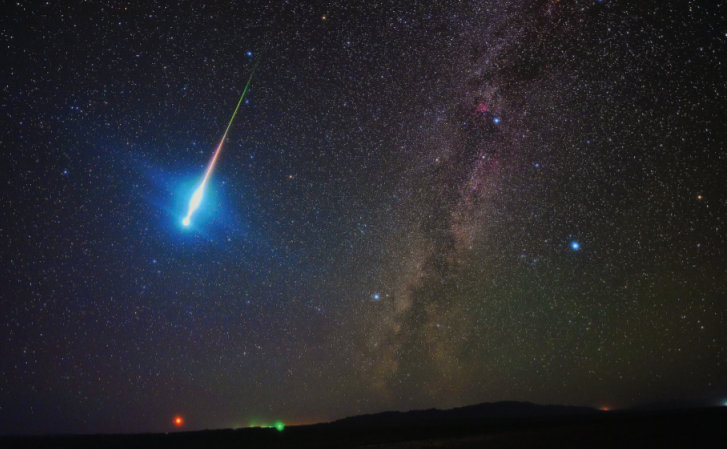
Zhang Xiuquan took the picture Polar in Jokulsarlon, Iceland, in February. NATIONAL MARITIME MUSEUM
Prestigious competition draws entries from hopefuls all over the world
Stellar work from Chinese photographers including shots of the Northern Lights rising above Iceland and a meteor burning through the atmosphere over Qinghai province have been shortlisted for this year's staging of the world's top astronomy photography competition.
A total of eight images from Chinese photographers are in with a chance of winning the Royal Observatory's Insight Investment Astronomy Photographer of the Year 2019.
The competition, which is run by the Royal Observatory Greenwich in London, celebrates outstanding images of celestial objects, cosmic events, and regions of the night sky. It is widely considered to be the most prestigious competition of its kind in the world.
The shortlist for this year's competition, the 11th time it has been staged, contains 140 images, chosen from 4,600 entries submitted by amateur and professional photographers in 90 countries.
Winners in nine categories as well as the overall competition winner will be announced at a prize giving ceremony in September. The overall winner will receive 10,000 pounds ($12,600), and winners of all other categories will receive 1,500 pounds.

Tang Zhengye's image The Perseid Fireball 2018 was taken near Keluke Lake in Qinghai province. NATIONAL MARITIME MUSEUM
The competition's judges include well known British comedian and amateur astronomer Jon Culshaw, art editor of the BBC's The Sky at Night magazine Steve Marsh, and other experts from the worlds of art and astronomy.
Seven Chinese photographers impressed the judging panel with their captures of the moon, a meteor shower, the Northern Lights, and the Milky Way galaxy.
The shortlist includes one image each from Bai Yifan, Zheng Wang, Zhang Xiuquan, Angel Yu, Li Yiming, and Tang Zhengye, and two shots from Yang Sutie.
Five of the Chinese entries depict the Northern Lights. Yang, Yu, Zhang and Zheng all visited Iceland over the winter to capture the natural light display. Iceland is one of the best places in the world to see the phenomenon, which occurs when solar winds disturb the Earth's magnetosphere.
Zhang travelled with his family to Jokulsarlon on the country's southern coast in late 2018 to capture his entry Polar, and said he screamed with joy when the lights put on a particularly impressive show.
Bai stood on a natural rock bridge Albany in Australia to capture an expansive image of the Milky Way, while Tang's shot of a meteor shower was taken at Keluke Lake in Qinghai Province, China.

Zheng Wang captured the Aurora Borealis that looked like the Chinese mythical bird-phoenix-flying in the sky. NATIONAL MARITIME MUSEUM
Judges praised the composition of Li's image of the lunar corona, saying the rings of light resemble colorful brush strokes on a painting.
Both Yang and Zhang featured in last year's competition. Yang's image Gemini Meteor Shower was shortlisted for the 2018 Skyscapes category, and Zhang's shot The Moonset Eclipse over Beijing made the shortlist in the 2018 Young Photographer category.
The winner of the Best Newcomer category in last year's awards was also from China, Li Tianhong, a 30-year-old electrical engineer from Changsha, in Hunan province. His shot Galaxy Curtain Call shows the Milky Way arcing through the sky above the Chinese Spectral Radioheliograph in North China's Inner Mongolia autonomous region.
Another Chinese photographer, Yu Jun, won the overall competition in 2016 with the image Baily's beads, which used multiple exposures to capture the sun during different stages of a total solar eclipse.


